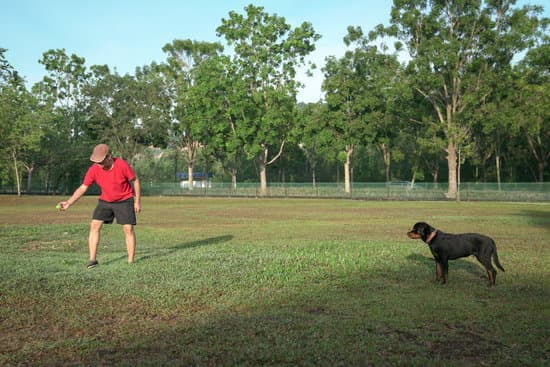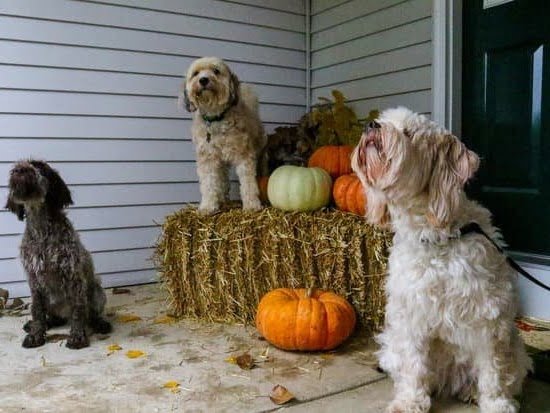Introduction
Car training is an important activity for both you and your dog. It refers to teaching your pup how to behave properly in the car to make car rides a more enjoyable experience. The benefits of car training your dog are twofold: it helps keep your dog safe by helping them stay calm and interact with their environment, and it keeps them from going through motion sickness or upset stomachs. These benefits can also help you be a better driver and increase the safety of those around you while you are taking a road trip. Car training is not only beneficial for the safety of all passengers, but it can also be part of the bonding process between human and canine. Through car training, your pup learns that spending time inside of a vehicle can be pleasurable rather than stressful or overwhelming.
Preparing for Car Training
Before you begin car training your dog, there are some essential supplies and safety precautions that must be taken. First and foremost, you should always have a leash or harness available to use when training your dog in a car. This will give you control over the situation should anything arise where your pet becomes overwhelmed or distracted by the environment. Additionally, it is important to make sure the car has plenty of ventilation while in motion. This can be done either naturally with open windows or through the use of air conditioning or heating depending on the climate outside. It is also important to make sure that the area around your dog while they are inside the car is free of any hazardous materials such as pointed objects, chemicals, or foods that could become a choking hazard. Lastly, familiarize yourself with basic animal first aid in case an emergency arises during a car ride with your pet. Having these items on hand and taking these safety precautions will ensure a safe and successful car training experience for both you and your pet!
Getting Started
When it comes to car training your dog, the key is repetition. The process needs to start slowly and steadily until the desired outcome of a relaxed ride in the car is achieved. A good place to start is by first introducing your pet to being around a vehicle before you even step foot in the car.
To familiarise them with the vehicle, allow your dog free exploration of it from all angles, inside and out. Take a few minutes for them to get used to it so that eventually their paws will not hesitate about climbing up onto one. Consider offering treats when they touch or sniff any aspect of your car, this reinforces that nothing bad will happen and helps to maintain their confidence as they gear up for future rides.
Once your pup has adjusted sufficiently, take procedures a step further by asking them to climb in or on the vehicle. Do not force them towards it but encourage them with helping words like ‘hop’ or ‘up’. Make sure you are still rewarding behaviours with treats throughout these steps so your pet knows they are safe and secure while inside the car. Don’t forget plenty of praise and reward after each successful step forward! As you continue this process with patience and commitment, soon enough you’ll reach longer drives on more enjoyable occasions!
Forming Positive Associations
Forming positive associations during car rides is an important aspect of car training your dog. To do this, you should reward your dog’s good behaviour while in the car with treats and verbal praise. For example, if your dog is sitting calmly in their designated spot, be sure to give them a treat right away and say something like “good boy” or “good girl”. Make sure to offer rewards consistently throughout the ride; if you wait too long in between rewards, your dog may become less likely to display positive behaviour in the future. Additionally, it can be helpful to take breaks along the way when you are first teaching your pup how to behave in the car. These rest stops can give your pup an opportunity to stretch their legs and use the bathroom before heading back on the road again. With these tools and techniques for forming positive associations through reward-based training, you’ll soon have a well-behaved pup who isn’t frightened by car rides!
Increasing the Distance
When it comes to car training your dog, the important thing to keep in mind is taking things slow and steady. You don’t want to rush into long trips right away or you’re apt to set yourself up for failure. Instead, focus on gradually increasing the distance and duration of each trip. Start off by taking a short ride around the block and gradually build upon that success until you’re comfortable taking longer rides together. Make sure that each new journey is not too much longer than the prior one; take one step back for two steps forward.
Another way of gradually increasing distance and duration of each trip is by rewarding your pup for good behavior throughout your excursions. After every successful ride, be sure to give them a treat so they can associate car rides with positive experiences. In addition, try adding in some stops during these trips, such as short walks through parks or parking lots with other dogs, so they can stretch their legs while having fun as well. Eventually this will help them become more relaxed over time when in the car or on a long drive altogether.
Positive Reinforcement
Positive reinforcement is one of the most effective ways to train a dog. It encourages them to repeat desirable behaviors, while discouraging undesirable behavior. Some examples of rewarding positive behavior include providing treats, verbal praise, petting or playing with the dog, and providing new toys. You can also provide access to activities they enjoy such as going on walks or being allowed to explore the yard.
When using positive reinforcement with dogs it’s important to be consistent in the rewards you give and the timing at which you give them. Too much reward too quickly can over-reward your dog and lead to undesirable behaviors when rewards are not provided (i.e., begging or jumping up). Furthermore, providing a reward after a delay will help make sure that your pup understands what behavior is being rewarded. As an example offering a treat once your pup completes a sit command will help him/her understand better than giving a treat before he/she has done anything.
Another technique for reinforcing positive behaviors is through clicker training. Clickers produce a distinct sound that can be used to mark desired behaviors at the exact moment they occur. When combined with rewards like treats or a toy, the clicker creates an effective way of training puppies and adult dogs alike!
Dealing With Anxiety
Traveling with a dog is difficult for both the pet and their human due to the animal’s anxiety. The key to successfully car-training your dog is providing them with a safe and comfortable environment. Building trust between yourself and your pet will help make the process easier. Here are some strategies for de-escalating stress and reducing anxiety during travel:
1. Establish A Safe Space: Prepare an area in the back of your car that is comfortable with bedding, favorite toys, blankets, and chews if necessary. Creating a consistent space with familiar items will help reduce their anxiety when they are traveling.
2. Use Positive Reinforcement: When taking short trips, reward your pet with treats or loving words whenever they behave properly in the car. This type of positive reinforcement will teach them good behavior while on the road over time.
3. Desensitization: Preparation is key! Slowly expose them to automobile noises such as seatbelts clicking or music playing at low volumes until they become desensitized to it, allowing them to relax more during longer trips.
4. Practice Relaxation Techniques: Deep breathing or massage techniques can help soothe pets during car rides, which can be beneficial in reducing their overall stress levels and allow them to better cope with travel situations in the future.
5. Speak Comfortably: Speak calmly and soothingly during car rides as this will help create an atmosphere of comfort for your pet rather than fear and anxiety due to tense environments accompanied by harsh tones from their owner’s voice.
Finishing Touches
It is important to make sure that your dog remains safe and comfortable while traveling, especially in the case of long distances. Here are a few tips on how to car train your dog for these longer trips:
1. Make sure your dog remains properly restrained in car travel. This should be done with either a harness or seat belt that has been specifically designed for canine use. This will ensure your pet is safest in the event of sudden stops or accidents.
2. Get your dog acclimated to the car before going on a long trip by taking them on shorter drives around town. This will help make them more comfortable with being inside the vehicle and prepare them for extended time periods in the car.
3. Bring plenty of water and snacks for breaks during travel so your pup doesn’t get dehydrated or hungry during long trips. Also add a toy or two just in case they get bored on the ride, as well as some old towels to help absorb any messes along the way.
4. Make frequent stops at rest areas so that you can stretch your legs as well as give your pooch a potty break, allowing them adequate time to get re-acclimated after extended drive times inside the vehicle. It will also give you both time off from each other and make sure their bladders are relieved so that no accidents occur during the journey!
Conclusion
Car training can be an effective method to teach your dog to behave appropriately in the car. It helps to reduce stress levels and makes it a more enjoyable experience for both you and your pet. This type of training also increases safety for both humans and animals, as it is important that your pet behaves well in the car in order to avoid distractions. Car training may also help to reduce any separation anxiety associated from being away from its owner or home environment. Additionally, regular car trips can create positive memories and reinforce good behaviors as dogs are known to be creatures of habit. Ultimately, if done properly and with patience, car training can drastically improve how your dog interacts with the world around them and make travelling easier overall.

Welcome to the blog! I am a professional dog trainer and have been working with dogs for many years. In this blog, I will be discussing various topics related to dog training, including tips, tricks, and advice. I hope you find this information helpful and informative. Thanks for reading!





